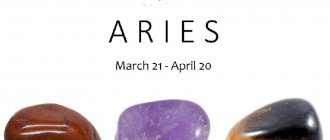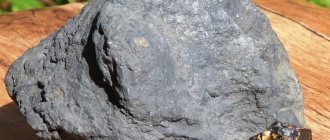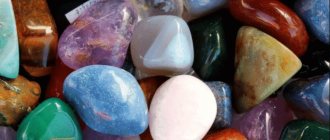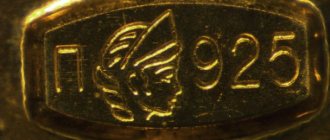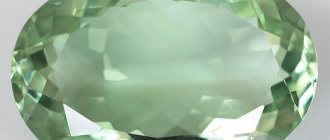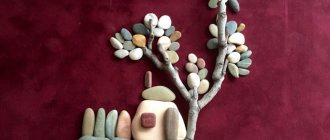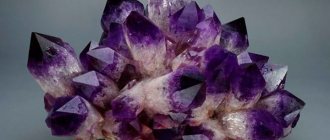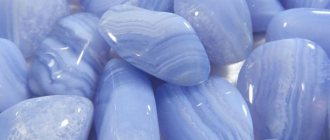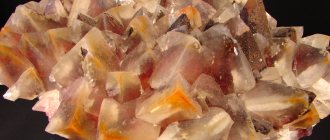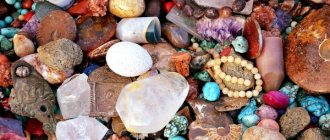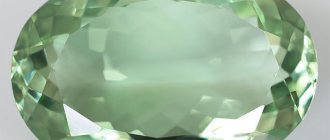If you love intellectual relaxation, then you probably do crossword puzzles or scanword puzzles in your spare time. Of course, this is a very exciting activity that allows you to expand your horizons and demonstrate your erudition.
Just how often have you encountered a situation where you need to guess, for example, a 6-letter word that you have no idea about? Most likely, you will remember more than one such case when, due to such an unfortunate misunderstanding, another scanword puzzle remained incompletely solved. But now you have a unique assistant - the Crossopen.ru !
Answers to scanwords on VKontakte, Odnoklassniki and many others
What is our service?
It will replace you with many dictionaries, encyclopedias and well-read relatives with whom you previously consulted if you were unable to find the right word on your own. With Crossopen.ru you can easily solve a crossword puzzle of any difficulty level using an intuitive search form.
The main advantage of our service is a huge database of words and questions for which you can find the appropriate answer. A user-friendly interface will provide you with a quick search for words of 3, 4, 5 or more letters . It is important to note that at the same time you can clarify your request by indicating the subject, as well as the letters you already know - the so-called word search by mask .
Let's look at the interface using a clear example: you need to find out the poet's last name, which has 6 letters, and the third is “sh”. You set up a search for 6-letter words, click on the corresponding empty cell and insert the letter you know, after which you specify the keyword - “poet”. As a result, you get various options, one of which is sure to be correct. This way you can find any answers to crossword puzzles , because it’s very simple!
You can solve any crossword puzzle!
Our service is absolutely free, and you can freely use it to search for answers to any crossword or scanword puzzle, both from the newspaper and on the Internet. For example, our database contains almost all the answers to Odnoklassniki and VKontakte crossword puzzles, which will allow you to solve them quickly and with pleasure.
Plus, you can create these kinds of brain teasers yourself! To do this, just list the words in alphabetical order and choose the options that suit you with descriptions so that the resulting crossword puzzle is interesting and educational.
So if you like to solve crosswords, the Crossopen.ru will become a convenient and reliable assistant for you. Spend your free time doing your favorite activity with pleasure!
A B C D E F G H I J K L M N O P R S T U V
KAWAKAWA is the Polynesian (Maori) name for jade. CACORTOCITE is a feldspathoid syenite with numerous eulyalite inclusions. KALAZIAS (GELOZIA) – a magical stone of antiquity. Apparently, this was the name given to colorless corundum or diamond. KALAIT – turquoise. CALAMINA – hemimorphite. CALAMINA AZURRA – blue smithsonite, local name. KALAMIT – tremolite. KALBENITE is the local name for mirikit. CALYPTOLITE is an obsolete name for zircon. CALIFORNITE – dense aggregates of greenish, olive green and grass green vesuvianite. CALLAINITE is a turquoise-like material found in Celtic graves near Locmariaquer (France). CALLAINIT is a blue variety of highly translucent variscite. CALLAIS is the ancient name for turquoise. KALOTIN – coritis. KALTSENTIN is an imitation of opals from iridescent quartz-zoisite rocks. CALCIODIALOGITE – calcium rhodochrosite. CALCITE – anhydrous calcium carbonate. CAMELEONITE – chameleonite. STONE ROSE – desert rose, stone rose – intergrowths of gypsum crystals. STONE CROSS – a cross-shaped double of staurolite, painted blue. AVENTURINE STONE is a solar stone. ACOUSTIC STONE – the ancient name for carbuncles. ALEPPO STONE - eye agate from Syria, geographical name. ALIPUR STONE - ruby from the outskirts of Mysore (India). AMAZONIAN STONE – amazonite. AMARIL STONE - decorative, patterned chalcedony from Texas. AMULET STONE – coral. ARMENIAN STONE – lapis lazuli. ASPARAGUS STONE – yellow-green apatite crystals of regular shape from Spain. SATIN STONE is a fibrous type of gypsum. AZTEC STONE – dense masses of smithsonite. IMMORTALITY STONE - thin plates of jade (mostly jade), which were placed on the eyelids of the dead. According to Chinese tradition, this ensures immortality. BROWN BROWN STONE – hausmannite. BEZOAR STONE – bezoar. BELUGE STONE – bezoar. BRISTOL STONE is an ancient name for colorless topaz and quartz. BOTTLE STONE is a polysemantic term. Obsidian, moldavite or green tektites with facet cut. BUKHARA STONE – lapis lazuli. VENUS STONE – amethyst. VICTORIAN STONE - a glassy imitation of a gem with a fibrous structure and a cat's eye effect. Made in Japan by fusing quartz, calcite, fluorite, magnesite and feldspar. WATER STONE (WATER) – glassy orthoclase or opal hyalite. WAX STONE – agalmatolite. JET STONE – black tourmaline. GYPSUM STONE – colored varieties of gypsum. Ocellated STONE – thomsonite or ocellated agate, a polysemantic term. BLOCK STONE – jade or melanitis, a polysemantic term. BLUEBERRY STONE – peristerite. PEAS STONE – cemented oolites of aragonite. MUST STONE – agalmatolite. BURNING STONE – amber. GARNET STONE is an outdated name for garnet. DENDRITIC STONE - dendritic agate, chalcedony or opal, as well as petrified wood, a polysemantic term. DERBYSHIRE STONE - see Derbyshire spar, also a trade name for jewelry fluorite. DRAGON STONE – draconites. HEBREW STONE – written granite. JEWISH STONE – high quality Baltic amber, as well as Judaicus lapis. BISHOP'S STONE – amethyst. TOAD STONE – Botrax. PEARL STONE – perlite. SOUNDING STONE is the name of jade in ancient China. STONE OF HEALTH – pyrite. The name appeared in antiquity, when various medicinal properties were attributed to pyrite (Pliny the Elder). ZEBRA STONE – blue asbestos with crocidolite inclusions. GREEN STONE – jade or chlorastrolite, as well as prosiolite, a polysemantic term. GREEN STAR STONE – chlorastrolite. EARTH STONE is the ancient name for fossil amber. MIRROR STONE - gypsum, as well as talc, perhaps this is what specularis was called. SNAKE STONE – draconites. GOLDEN RED-BROWN SPAM STONE – aventurine with hematite inclusions. GOLDEN STONE – artificial glass, imitation aventurine. NEEDLE STONE – hairy. CAVIAR STONE – cemented aragonite oolites. IMORY STONE is a Victorian stone. IMPULSE STONE – moonstone. INDIAN STONE – touchstone. INCAN STONE – pyrite; see also Inca mirror. INCAS STONE – Inca stone. SPARKLING STONE – spinel. CAMBAYAN STONE – Indian carnelian. CANADIAN BLUE STONE – sodalite. CANARY STONE – yellow carnelian. KING STONE – glass imitation of jade. STONE OF WITCHCRAFT theotetl. QORAN STONE is a dark gray rock reminiscent of talc slate. BROWN STONE – hessonite or other garnet. CROSS STONE – twin crystals of staurolite, as well as andalusite (chiastolite). BLOODY STONE – hematite, as well as carnelian with bright red jasper ingrowths. GOOSEBERRY STONE – green grossular. CUBIC STONE – boracite. AZURE STONE – lapis lazuli. SWALLOWER STONE – chelidon. ICE STONE – cryolite. LIMORI STONE – glass imitation of jade. MOON STONE - potassium spar and plagioclase with a characteristic glow in the form of glittering white and bluish-white silver-blue stripes - the effect of adularization. MOON ADULAR STONE – orthoclase (adularia) with albite microinclusions, due to which a bluish-white or blue glow appears. ALBITE MOON STONE – albite with inclusions of potassium feldspar, mainly plagioclase. Thanks to these inclusions, a light blue glow appears. GREEN MOONSTONE – amazonite. CALIFORNIA MOONSTONE – white, translucent chalcedony, giving a bluish-white glow. CANADIAN MOON STONE – lead glass with an admixture of radioactive lead, as well as uranyl glass, giving the effect of moonstone. RED MOON STONE – opaque orthoclase containing albite crystals, has a faint glow. MADAGASCAR MOONSTONE – labradorite moonstone. MICROCLEAN MOON STONE – a highly translucent microcline containing albite. It has an internal glow - adulariscence. MOON STONE OLIGOCLASE – light blue and yellow crystals of oligoclase and albite, giving a white glow. OREGON MOONSTONE – blue-white chalcedony with an aventurescent effect. ORTHOCLASE MOON STONE – orthoclase with an admixture of albite, giving a white or bluish-white glow. PRISMATIC MOONSTONE – colored chalcedony with a silvery-white glow. PINK MOONSTONE – pink scapolite with white metallic reflections. BLACK MOONSTONE – microcline moonstone. RADIAANT STONE – actinolite. STONE OF LOVE – aventurine quartz. FROG STONE – toad stone. MADERIAN STONE – zircon. POPPY STONE – jasper with white or gray rounded inclusions in the red ground mass or vice versa. MAJORIAN STONE – New Zealand jade. HONEY STONE – honey-yellow chalcedony or mellite. MECC STONE – pink carnelian (carnelian). MILL STONE – pyrite. MILK STONE – galacite. FROST STONE - a diamond with white spots reminiscent of frosty patterns on glass, as well as frost agate. MOSS STONE – moss agate, dendritic agate. MOSSY STONE – moss agate. SOAPSTONE – (1) saponite mineral; (2) steatite – a type of talc; (3) colloquially and other stones that feel greasy to the touch. STONE OF HOPE – jade. OF HEAVEN – turquoise. STONE OF THE NILE - jasper mined in the upper reaches of the Nile. NEW ZEALAND GREEN STONE – jade. STONE OF NIGHT – synthetic rutile. SHAPED STONE – agalmatolite. FIRE STONE – opal. STONE EYE OF THE WORLD – hydrophane. DEER STONE – tugtupite. OOLITE STONE – aragonite. EAGLE STONE – aetite. ORCHID STONE – amethyst. PEACOCK STONE – malachite. Pagoda STONE – agalmatolite. PANAMU STONE is the Maori name for jade. Brocade STONE – jasper with numerous silver-golden specks. BROCADE STONE – brocade stone. LANDSCAPE STONE – landscape agate. PETOS STONE – marble. COCK STONE – alectorius. KIDNEY STONE – jade or jadeite, according to the Aztecs, was a good cure for kidney diseases. RAINBOW STONE – iris, as well as labradorite. RHINESTONE – rhinestone, the English name for rock crystal. PINK STONE – rhodonite, as well as rhodochrosite. PINK INCA STONE – rhodochrosite. LYNX STONE – yellow-brown or yellowish-red zircon. SARK STONE – amethyst from the island of Sark (Great Britain). SATIN STONE – satin stone. SUGAR STONE – datolite. STEPHAN'S STONE – white chalcedony with numerous red spots. SILVER STONE is the traditional name for moonstone in France. SINAI STONE – turquoise. BLUE STONE – sodalite or lapis lazuli, as well as chalcanthite. An ambiguous term. BLUE CANADIAN STONE – sodalite. RESINIC STONE – retinalite. RESIN STONE – obsidian. SUN STONE – plagioclase with the effect of aventurescence (feldspathic aventurine), and also the name of amber. ASPARAGUS STONE – light green Tyrolean apatite (Austria). GLASS STONE – axinite or hyalite. STEPHANOV STONE – heliotrope. SIERRA STONE – serra stone. TAUSIN STONE – labradorite or grayish sapphire. TIGER STONE – brown jasper with black or white stripes. TELEVISION STONE – thin polished ulexite plates. TIBETAN STONE - a mixture of aventurine quartz and eosite, as well as porphyrite. AX STONE – jade. PIPE STONE is a type of jasper. TURKISH STONE – turquoise. FIGURED STONE – agalmatolite. PURPLE STONE – cordierite. STONE OF FREDERICK THE GREAT – chrysoprase. CHAMELEON STONE – hydrophane. CINNAM STONE – hessonite. GARLIC STONE – scorodite. WONDERFUL STONE – pyrophyllite. SCOTTISH STONE – smoky quartz (rauchtopaz). SPRUDELSTEIN STONE is an aragonite formed in hot springs. OKHOTSK STONES – marekanite. CANARY TOURMALINE - see CANARY TOURMALINE. KANASITE is a mineral of the silicate group. CANDITE – blue spinel. CANCRINITE is a mineral, aluminosilicate with a frame structure. Varieties: cherry and microsommite. CANUTILLO - high quality emeralds from Colombia. CAP EMERALD is a prehnite from South Africa. CAP RUBIN – pyrope. CAP-CHRYSOLITE - prehnite from South Africa. KAPNIKIT is the old name for rhodonite. CAPNICITIS is the old name for wavellitis. CAPRA JAM is a synthetic rutile. CAPRI – synthetic rutile. CARBONADO is a gray-black and black microcrystalline variety of diamond. CARBONETTO is a purple variety of calcareous red coral. CARBUNCLE is an old name, used for many centuries, for mainly red stones: garnets, rubies, spinels and topazes. CARINTHIT is a type of wulfenite. CARNATITE - labradorite, an outdated term. CARNELIAN is a red and orange variety of chalcedony. CARNEOL is a translucent variety of chalcedony (carnelian) of pink or light red color, turning into dark brown. CARNEOL YELLOW – yellow chalcedony. CARNEOL-ONYX - ribbon agate with alternating red-brown and white layers. KARUBA is the old Persian name for amber. KARFUNKEL is an old trade name for pyropes, rubies and spinels, as well as other bright red stones, a polysemantic term. CARCEDONIUS is the ancient name for green stones, primarily grossular, uvarovite and jasper (Pliny, Agricola). CASSINITE is an orthoclase containing a significant amount of barium feldspar. CASSITERITE is a mineral, tin oxide, isostructural modification of rutile. CASTORITE – petalite. CATALIN is an imitation of ornamental stones made from phenolic resins. CATALINAITE - jasper from Cape Catalina (Guam Island). KATANGITE is a variety of chrysocolla. CATAPLEITE is a mineral, zirconium-sodium silicate. KATEL is a very lightly colored beryl. CATLINITE is a kaolin-like mineral used in the form of jewelry by the Indians. CAHOLONG is a translucent, porous opal with a pearlescent sheen of white or bluish-gray color, as well as an opaque or slightly translucent milky-white agate. KAHURANGITE is a light green translucent jade from New Zealand. KATSABR is the ancient Arabic name for jet. CASHALONG is an old name for porous opal. KASHAN-RUBY – synthetic ruby. KASHGAR-JAD – low quality jadeite. KASHMIR BLUE – cornflower blue sapphire. QUARTZ is a mineral, one of three polymorphic varieties of silicon dioxide. AVANTURINE QUARTZ – aventurine. AZURITE QUARTZ is a granular variety of blue quartz, which is given to it by randomly located intergrowths of crocidolite and dumortierite. AMETHYST QUARTZ – amethyst. ARTICHOKE QUARTZ is a morphological variety of rock crystal. COLORLESS QUARTZ – rock crystal. BABYLONIAN QUARTZ is a morphological variety of rock crystal with a stepped crystal shape. VARISCITE QUARTZ – quartz “overgrown” with variscite. HAIRY QUARTZ - a type of quartz with numerous hair-like ingrowths, see rutile, acicular quartz. HAIRY QUARTZ – hairy. HAIRY QUARTZ – hairy. BLUE QUARTZ is a pale blue to pale violet-blue variety of quartz. The color is given by ingrowths of rutile, tourmaline and magnetite. SMOKY QUARTZ – rauchtopaz. YELLOW QUARTZ – citrine. VENINED QUARTZ – ordinary quartz with a parallel-veined structure. FAT QUARTZ – ordinary quartz, characterized by a greasy sheen. NEEDLE QUARTZ - a type of quartz (usually rock crystal) with numerous needles or hairs of inclusions of rutile, asbestos, actinolite, goethite, etc. EMERALD QUARTZ - prase. IRISHING QUARTZ – rainbow quartz. RED QUARTZ – flint with a high iron content. QUARTZ – azurite quartz. MILKY QUARTZ – a type of quartz with a milky color. NILE QUARTZ – gray-brown or brown spherical jasper. PRISMATIC QUARTZ – cordierite. RAINBOW QUARTZ – pure colorless quartz with numerous microcracks and iridescence. PINK QUARTZ – ordinary pink quartz. RUTILE QUARTZ – quartz with inclusions of hair-like red and golden-yellow rutile ingrowths. SAPPHIRE QUARTZ – quartz with inclusions of blue asbestos fibers. TOPAZ QUARTZ – smoky quartz (rauchtopaz). CRYSTAL QUARTZ – rock crystal. SCOTTISH QUARTZ – smoky quartz (rauchtopaz). QUARTZITE is a metamorphic rock consisting of quartz. SHOKSHINSKY QUARTZITE is a homogeneous reddish, dark brown quartzite mined in Karelia on the southwestern shore of Lake Onega. BELORETSKY QUARTZITE – speaks white. KVIRITA is a magical stone of antiquity and the Middle Ages. Mineralogical identification is not possible. KEYSTONEITE is a blue chalcedony colored with chrysocola inclusions. KERAVNIUM - in ancient times was considered a magical stone. Mineralogical identification is not possible. CERAMITE – scapolite. CERULEOLACTITE is a solid solution, the extreme members of which are planite, variscite and wavellite. KERCHENITE is a finely dispersed product of alteration of vivianite. KYANITE is kyanite, a mineral, most often blue in color, from the group of island silicates. KIANOS is the ancient name for blue stones: kyanite, azurite, lapis lazuli, etc. KIMBERLITE is an igneous rock enriched in olivine. KIMZEIT is a dark brown zirconium garnet. CINBOAR – mineral, mercury sulfide. KYPRINE is an opaque variety of vesuvian, light blue and blue-blue in color. KIRIS is the old Mongolian name for turquoise. BRICK ORE – a mixture of cuprite and limonite. KLAPROTIN is an old name for lasulite. KLAR is a type of amber. CLEVELANDITE is a type of albite. CLEIOPHANES – sphalerite without iron admixture, forms transparent crystals of light yellow, honey or greenish-yellow color. CLINOHUMITE is a mineral, a monoclinic variety of humite. CLINOZOISITE is a mineral of the epidote series, isomorphic to epidote and piemontite. CLINOCHLORE is a mineral of the chlorite group, also known as seraphinite. KNORRINGITE is a green chromium garnet. KNOCH – white opaque amber. COBALTINE is a mineral, sulfide of arsenic and cobalt. COBALT FLOWERS – erythrin. COVELLINE is a mineral of the composition CuS (divalent copper sulfide), an extreme member in the Cu-S solid solution system. ENGLISH LEATHER – pink and pink-red coral. KOKINERITE is a type of chalcocite with an admixture of silver. COLLOCHROM is a synonym for crocoite. COLOPHONITE is a cloudy variety of opalescent yellow-brown andradite. COLUMBITE is a mineral of the oxide group, isomorphic with tantalite. COMBED PYRUM – marcasite in the form of jagged doubles, reminiscent of a cockscomb. IRON PURITY – pyrite. SPEAR-SHAPED PYRUM – marcasite of the appropriate shape. PYRITY VIOLATE – pyrite. MAGNETIC pyrite – pyrrhotite. COPPER PYRITY is an outdated name for chalcopyrite. MOLYBDENUM PYrite – molybdenite. ARSENIC PYRITY is an outdated name for arsenopyrite. TIN PYRITY is an outdated name for stannin. SULFUR PYrite – pyrite. KONAMARA – noble translucent serpentine. CONCHITE is a fibrous or lamellar variety of aragonite, the main component (along with chitin) of pearls and the nacreous layer of mollusk shells. COPALINE is an amber-like fossil resin. COPILLITITE is a zinc-iron variety of rhodochrosite. Coral - skeletons of marine invertebrates (polyps) consisting of calcite and aragonite. Coral Tosa is a white Japanese coral. Coral Horn is black coral. Japanese coral -lime coral dark red with a white axial part. Koralin is a halzedon, artificially painted red. Cordorite - dichrote, ioit, stone of lynxia. Coreitis is agalmatol. Corneolus is the name of Carneol in the Middle Ages. Kornerupin is a mineral of a class of borosilicates. Cornitite - mineral, anhydrous phosphate copper with hydroxilic CU3 (PO4) (OH) 3. A rare secondary mineral of oxidation zones of some hydrothermal copper deposits. Coronitis is light brown Dravite. Corsican greens - Bastitite with the effect of Schiller. Korund - mineral, aluminum oxide. Transparent varieties: ruby and sapphire. Zvozdnaya corundum - Asterix. Blue Corundum - sapphire. Corundry Chergery - Hyacinth -colored corundum. Corunditis is a white synthetic spinel. Catterite is a quartz with a characteristic pearl shine. Cat's eye - inilizes; In a broad sense - any mineral with the optical effect of a cat's eye in the form of a light strip, resembling a pupil of a cat and moving along the surface of the mineral into the opposite inclination side. Hungarian cat's eye is the trade name of the quartz. East cat's eye is a cereal -berilla cat's eye, as well as a sapphire with a cat's effect. The cat's eye is western - the trade name of the rock crystal. The cat's eye is ruby - Rubin with the inclusion of needles Rulal, which has the effect of a cat's eye. Cat eye topaz - the commercial name of the yellow topaz. The cat's eye is tourmaline - a tourmaline with the effect of a cat's eye. The cat's eye of chrysoberillus is Tsimofan, the merchant name of the chrysoberill with overflow. The cat's eye is Ceylon - the trade name of Tsimophan. Cat Gold - Pit. CRAMERIT -light brown sphalaris. Kranberry - Rubellite. Red copper ore - kuprite. Red light silver ore is an obsolete name for twig. Red zinc ore - zincite. Red tree is mountainous - obsidian with black and red stripes. Red iron iron ocher - hematite. Flint is an aggregate of hide -to -to -hectal and amorphous silica. Creolin -Brectia jasper and red-white ribbon jasper. Creed is a mineral of a grade class. Cryolite is a mineral of a grade class. Chrispit - quartz and agate with green hair -like (needle) inclusions. Crystallus - in antiquity, mountain crystal, as well as pure calcite crystals. Christoballitis is a high -temperature polymorphic variety of quartz. Chrisellektrum is an ornamental and magic stone of antiquity. Perhaps this is amber, yellow quartz, pyrite, marcasitis or chrysoberill. Blood -hematite, as well as brown or red-brown carneol. Crocidolite is a morphological variety of asbestos. Crocette is a mineral, class classes. Komolite is a transparent dark green turmaline. Cruisis is a variety of chiastolithic. Xantitis is a translucent yellow-brown variety of Vesuvian. Xantoconite is a variety of twigs. Xantolite is a variety of stavrolite, as well as the wrong name of Andradit, strongly contaminated with impurities. Xilopal - Hubble wood, in composition of opal. Xylotil is a hungry fossil tree. Kilkhutl is the Aztec name turquoise. Kubait - Mount Crystal from Cuba, the local name. Another meaning is the pseudocubic crystals of quartz of the rhomboedric gabitus. (Do not confuse Kuban and Kubit). Kubanite (quanite) - mineral, copper and iron sulfide Cufe2S3. Cuboite (Cuboite) - Analcim. Kuncite is a jewelry variety of spodumen. Baselskaya font - unsocused cross -shaped doubles of Stavrolite. Used as amulets and as church and cults. Domebruste Kolchens - Pyat. Kuprite - mineral, copper oxide. Kuprobamin is a copper -containing adamin. Kuprosamit is a copper -containing adamin. Kournokovit is a group of hydrated braters. Kyauke-Ate -Zhadeite. Kand - fluorite mined in the UK (Cornwall). The traditional local name. Kyustelit is a type of native silver with a gold content of 10-30%, an intermediate member of a number of gold-serebly.
